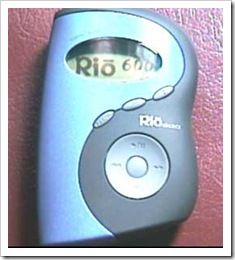Section 106 of the Copyright Act gives the owner of a copyright a bundle of rights which includes the rights to 1) reproduce the work, 2) prepare derivative works, 3) distribute copies of the works, 4) publicly perform the work and 5) publicly display the work. All of the music publisher’s income flows from this basic bundle of rights. It should be noted that the right to perform the work is sometimes segmented into two descriptions, one called the grand rights, or dramatic and theatrical performances of the work, and small rights, or all public performances other than theatrical, including live performances of the work and radio broadcasts. Here is New York attorney, Peter Shukat discussing grand rights:
To exercise control over these rights, a music publisher issues licenses to authorize various uses falling into this bundle of rights. For example, if a company wants to reproduce and distribute a copyright in a musical composition, the publisher will issue a mechanical license to a record label, for example. Mechanical royalties are a primary source of income for music publishers. In the United States, the U.S. Copyright Office sets the rate for mechanical royalties, which is currently 9.1 cents for songs that are 5 minutes or less, and 1.75 cents per minute for songs exceeding 5 minutes. The current mechanical royalty and historical rates can be found at the Harry Fox Agency’s website. The Harry Fox Agency administers licenses for, and collects and distributes royalties to its member of the National Music Publishers Association, although a music publisher can, and often does, perform this task on its own Since the rate is always subject to increase, a music publisher should also request language in the license that provides that payment is made at the rate in effect at the time the product is distributed.
Another major source of income for music publishers is public performance royalties. in the United States, these royalties are almost always collected by the three major performance rights organizations, ASCAP, BMI & SESAC. Outside the U.S., each country has its own performances rights organizations. See the “Resources” page on my blog for a list of and links to many of these. As discussed in Part 2 of this series, music publishers, as well as songwriters, affiliate with (i.e., enter into an agreement with) the performance rights organization to enable them to track airplay and live performances, and collect and distribute the royalties. Performance rights organizations issues “blanket” licenses to radio stations, television stations, large nightclubs, large restaurant chains, and retail source so that these entities can play the music of their affiliated songwriters and publishers. In exchange, these venues pay the performance rights organizations fees based on the anticipated usage. The societies then use varying formulas based on such factors as airplay and usage to issue payment to its affiliate songwriters and publishers.
The music publisher issues a synchronization license to the producers of television shows, movies and commercial advertisements for reproduction and distribution of the work. The “sync f ee” is usually a one time payment, varying from the hundreds of dollars to hundreds of thousands, dependent upon numerous factors such as the length of the segment in which the song is used, the prominence of the song in the scene (whether it is prominently featured or in the background), and whether it is the primary focus of the scene (as, for example, BTO’s old song Takin’ Care of Business as used in the Office Depot commercials). The publisher typically splits this type of revenue equally with the songwriter.
ee” is usually a one time payment, varying from the hundreds of dollars to hundreds of thousands, dependent upon numerous factors such as the length of the segment in which the song is used, the prominence of the song in the scene (whether it is prominently featured or in the background), and whether it is the primary focus of the scene (as, for example, BTO’s old song Takin’ Care of Business as used in the Office Depot commercials). The publisher typically splits this type of revenue equally with the songwriter.
A less generous source of income, but still significant nonetheless, is revenue generated by printing sheet music and lyrics. This is a type of public display, but can also fall into the category of reproduction and distribution. Print licenses are most commonly issued to publishers of individual sheet music (sometimes called “piano copies”) and so-called “folios” (a collection of sheet music by a particular artist) and sheet music collections. Income is also generated when lyrics to musical compositions are reprinted in a publication, such as, for example, when a book is printed in connection with a movie. How much of this income is given to the songwriter varies widely, as it is sometimes based on percentage basis, but also can be on a flat, cent rate, e.g, 15 cents per copy. When a percentage basis is used, it is sometime based on wholesale, sometimes retail. The general trend among publishers in past years, however, is to split everything equally on a 50/50 basi s.
s.
Of course, one rapidly growing area of revenue is in the arena of technology, i.e., computer software, multimedia products, singing greeting cards, DVD’s and particularly ringtones. Though these usages also involve the reproduction and distribution rights, they generally require specialized licenses and the rates a very market driven. Again, it is customary for a music publishers to split these fees equally with the songwriter.
Finally, a very significant source of income for a music publisher is foreign sub-publishing. Outside of the U.S., music publishers solicit foreign sub-publishers on a territory by territory basis. The arrangement is generally exclusive, meaning that the foreign publisher has the rights to exploit the music publisher’s entire catalogue of songs within that territory, including the entire bundle of rights, and issue mechanical, performance, synchronization and print licenses for the usage of the music. Typically, the U.S. publisher will receive 75% of the income generated by the foreign sub-publisher, while the sub-publisher retains 25%. The sub-publisher does not receive any ownership interest in the copyright and usually pays the U.S. publisher a significant advance on future royalties, dependent in large part on the amount of income the catalogue has generated in the U.S. Foreign income is often the subject of intense negotiation in writer deals, but very often a songwriter will receive half of everything the U.S. publisher receives, or 37.5 cents of the 75 cents received by the publisher.
Technorati Tags: Music Publishing,Music Lawyer,Entertainment Lawyer,Public Performance Royalties,Sychronization Fees,Licenses,Mechanical Royalties,Performance Royalties,Print License,Grand Rights,Copyright,Copyright Law,Music Business













